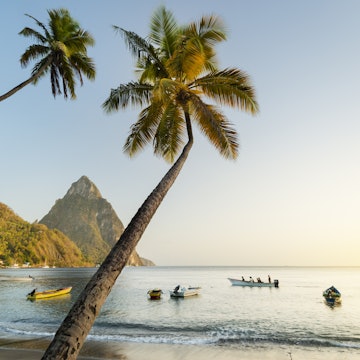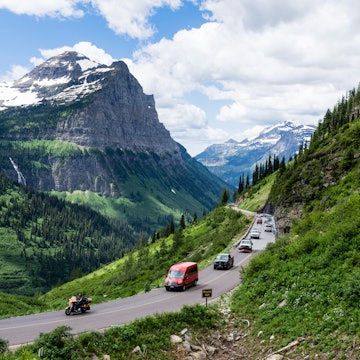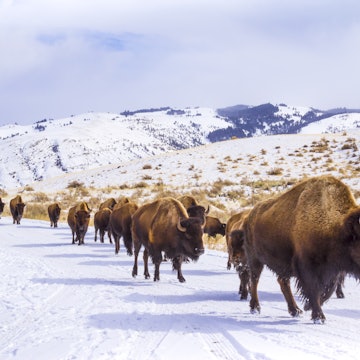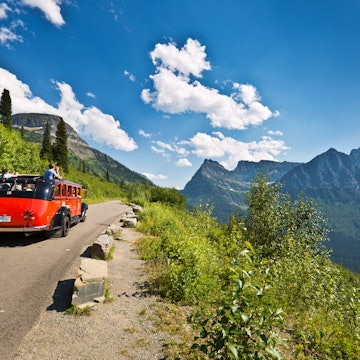
Choose the best time for your visit to Bozeman with our seasonal guide

Jul 9, 2024 • 4 min read

From sunny summer days by a lake to skiing on fresh powder, here's how to spend your time in Bozeman through the year © Jordan Siemens / Getty Images
The best time to visit Bozeman depends squarely on your interests. Summer is the obvious time for backpacking trips, fly-fishing or camping en route to family fun in Yellowstone National Park, but these activities are also fantastic in fall, when campgrounds and trails are noticeably quieter. Winter sees fewer cultural events but offers heavenly skiing and snowmobiling.
There's no bad season for visiting Bozeman; you just have to pack the right equipment and clothing. Here's a guide to the best times to come.
Come in June through August for outdoor fun and camping
Bozeman's brief summer months are all about the great outdoors. The warm days and cool nights offer perfect camping weather, and these are also the best months to hit the mountain trails. This is prime road trip season in Montana, especially for those headed south toward Yellowstone National Park. You'll need to book summer accommodations well in advance, even campsites.
The weather starts warming up in earnest in June, but this is also one of the rainiest months of the year (along with May). Weekly farmers markets herald the beginning of summer's bounty and run until September, offering locally sourced produce, crafts and food. Expect some lingering snow in higher basins and on north-facing slopes. July is statistically the hottest month of the year, with highs above 80°F (27°C) – or occasionally above 90°F (32°C). Head to the mountains or cool off on a tube floating down the Madison River. Downtown kicks off a season of weekly live music and food stalls that lasts until mid-August.
Warm, dry August days bring perfect outdoor weather but also the year's biggest cultural events. Give the kids a face-painting makeover at the Sweet Pea Festival, Bozeman's largest arts event. Foodies should look out for Montana's delicious flathead cherries and huckleberries.

Wildflowers fill meadows from April to May
The temperatures in spring are comfortable, but many of the hiking trails and access roads are still under snow at higher altitudes, and mud can be a problem on the trails. Cyclists will be thrilled to hear that Yellowstone National Park opens its roads to non-motorized transport only during the first two weeks of April. Daytime temperatures are above 60°F (16°C) in May, making for good lower-elevation hiking through meadows of Rocky Mountain wildflowers. However, higher valleys are still snowbound.
September and October are best for crowd-free hiking
Fall is a great time to visit Bozeman. The crowds thin out after Labor Day, as school and Montana State University students return to class, making this the optimal time for a kids-free camping trip. The days are warm, evenings are crisp, and summer's pesky mosquitoes are finally gone. Forest and park service campgrounds start to close in mid-September. Fall colors and crisp days make for perfect backpacking, and the national forests echo with the sounds of elk bugling. In the town itself, many popular summer activities, farmers markets and open-air events start to wind down.
Idyllic Indian summers often bring warmth in October, with temperatures above 70°F (21°C). Or it can snow! Hunting season starts across Montana, so wear bright colors if hiking in remote areas.

November to March is the best time for skiers and snowboarders
Winters can be long and brutal in Montana, with temperatures dropping to an average low of 12°F (-11°C) in December and a foot of snow falling. This is the low season for hikers, bikers and road trippers put off by the hairy winter driving conditions.
Skiers of course see things quite differently. December to March is the prime ski season in Big Sky and Bridger Bowl, but there's also plenty of fantastic cross-country skiing, snowmobiling, snowshoeing, dog sledding and more.
In November, average temperatures are around freezing, with highs not far above 40°F (4.5°C). Bozeman gets ready for winter, Yellowstone National Park closes most of its roads and facilities in the second week of November, and Big Sky is at its quietest, until formally reopening on Thanksgiving. There are good deals on discounted ski passes and accommodation at Big Sky in December, especially during the first 10 days when snow is less reliable. Don't expect temperatures to rise above freezing in Bozeman; even the bears are hibernating.
The mercury hits a low point in January, with average daytime highs a teeth-chattering 31°F (-1°C). Snow boots and down jackets are de rigueur, but the cross-country skiing is excellent, and winter wildlife-watching in Yellowstone National Park is a highlight. Perfect ski conditions continue – keep an eye on the blue light above the Hotel Baxter's rooftop sign downtown; when it flashes, there is fresh snow at the nearby Bridger Bowl ski resort. The winter season comes to a close at Yellowstone National Park in March, and the first shoots of spring start appearing. A cultural highlight is the MSU's annual Native American powwow, with dancing, drumming, food and crafts.















